What is VCSA?
VCSA stands for VMware vCenter Server Appliance. It is a software application developed by VMware that provides centralized management and control for VMware vSphere environments. vCenter Server is a key component in managing virtualized infrastructure and allows administrators to create, manage, and monitor virtual machines, clusters, hosts, and other resources.
The vCenter Server Appliance is a preconfigured virtual machine that runs a Linux-based operating system and includes all the necessary components to run vCenter Server. It is a self-contained solution that eliminates the need for a separate Windows server installation, as was required in earlier versions of VMware vSphere.
In the previous article, we covered the topic how to backup the appliance and how you can configure a scheduling to do it automatically. In this blog post, we are now going to see how we can perform restore from a backup and a few different things you should be mindful of before doing so.
The process of restoring a vcsa happens in two stages:
- The first stage deploys a new appliance
- The second one pushes the backed up configuration to it
Considerations
Restoring your appliance will revert it back to the state it was in when the backup was taken, however you should be aware of a few things to avoid surprises as much as possible.
If changes have been made between the backup and the restore, consider the following before restoring:
- Export your distributed switch configuration before restoring
- Assess the changes made to the content library
- Assess if you added hosts to vCenter, if you did, some virtual machines may failover
- Assess the changes made to the Storage Policy Based Management
- Assess the changes made to storage DRS
Note that this is not an exhaustive list, find the detailed information in the documentation.
Restore process
This process is a lot like deploying a new appliance. I will voluntarily skip the screens where you can only click next or accept the EULA as it doesn’t add anything useful.
You can leave the existing appliance powered on for now if you don’t want to shut it down immediately for some reason. Though you will have to do it when the restoration gets completed, hence it is better to do it now.
If you have used an encryption password in your backups, make sure you have it handy before starting the restore as you will need it later on.
Stage 1: Deployment
Start by mounting the ISO of the vCenter appliance and launch the ui installer.
- Click on Restore
- When you get to the Enter backup details page, enter the location of your backup. You need to specify the protocol but you don’t have to type the full path. Note that you don’t have to use the same protocol as you did for the backup. Protocol://IP-or-FQDN will bring up a file browser where you can browse to the backup folder where backup-metadata.json is located
- Select the folder associated to the backup you want to restore. You will find the date of the backup in the name (YYYYMMDD). In the screenshot it is a backup from June the 7th. The first letter indicates whether it was manual (M_) or scheduled (S_)
- When you click select you are brought back to the backup details page with the location field populated
- Click Next and review your backup information
- Click Next again. From now on, stage one will be similar to a regular appliance deployment. Type in the details of the deployment target. It can be an ESXi host or a vCenter server. Accept the certificate thumbprint if the target doesn’t have a trusted certificate installed
- Enter the name for the VCSA VM and the root password
- Select the deployment size and datastore you wish to use, most likely the same as the existing one. When you get to Configure network settings, configure it the exact same way as the appliance you are restoring
- If the existing appliance is still powered on you will get a warning that the FQDN or IP already exists. Click Yes. You will be asked later to shut down the appliance
- You may also get a warning about gateway and DNS connectivity if you don’t have access to them on the workstation you restore from. Click Yes
- Carefully review the details of your deployment and click Finish
- The deployment of the new appliance will now start. Wait for it to finish and click Continue. That will be the end of stage 1

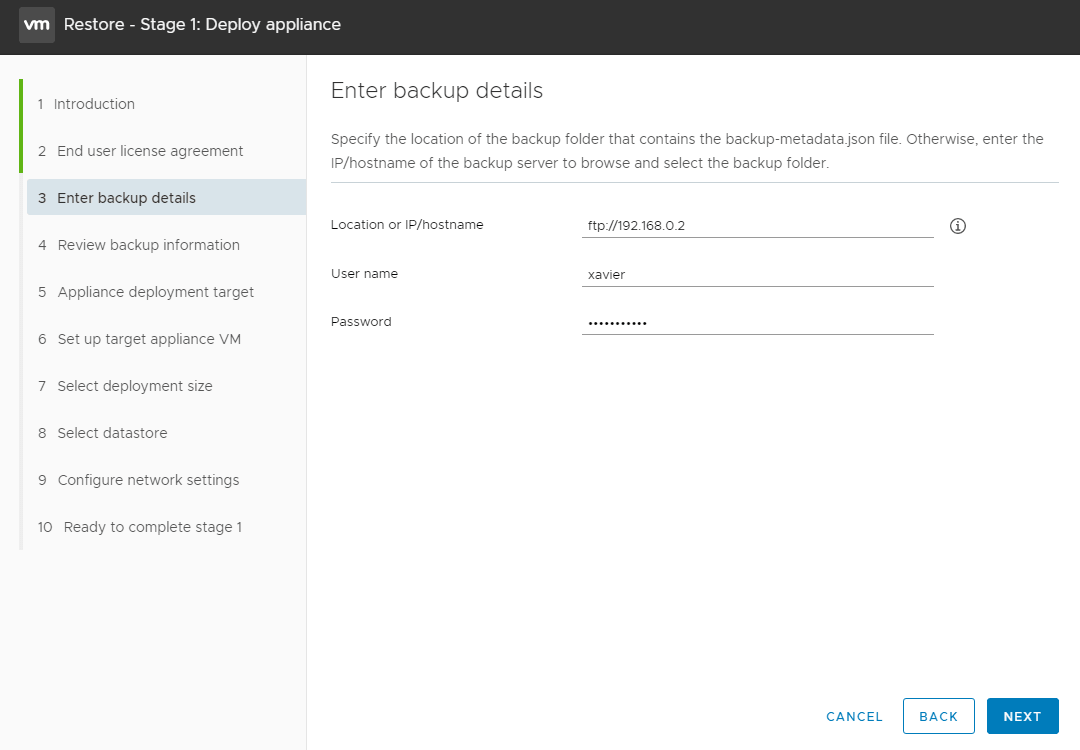

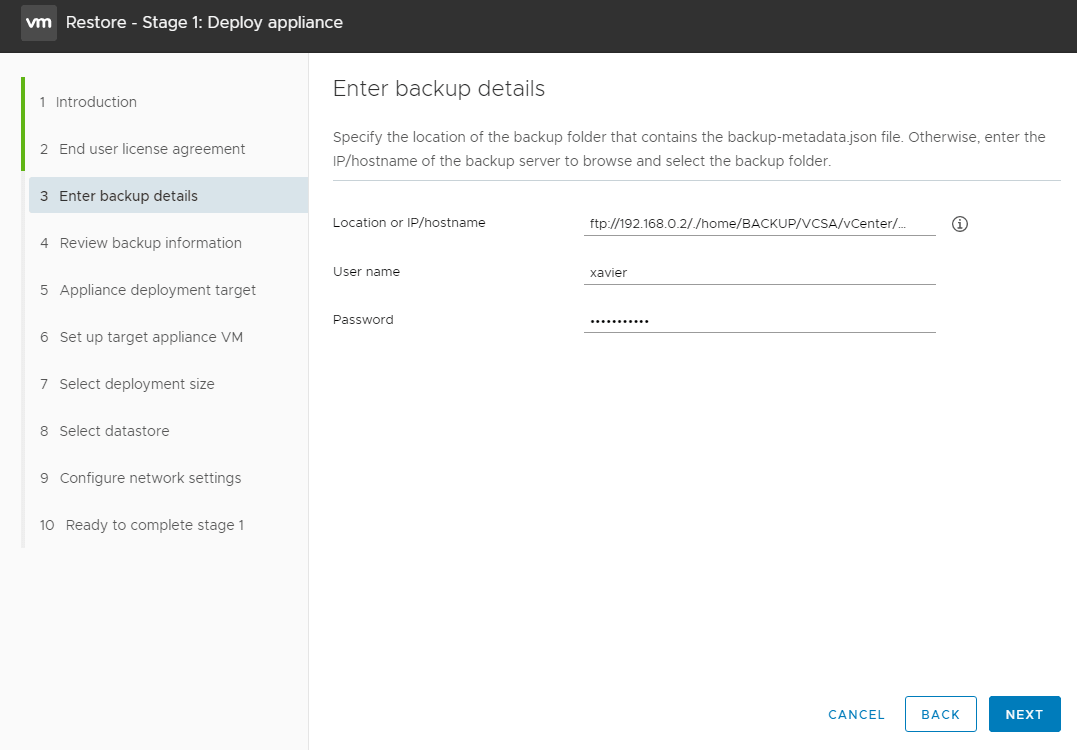
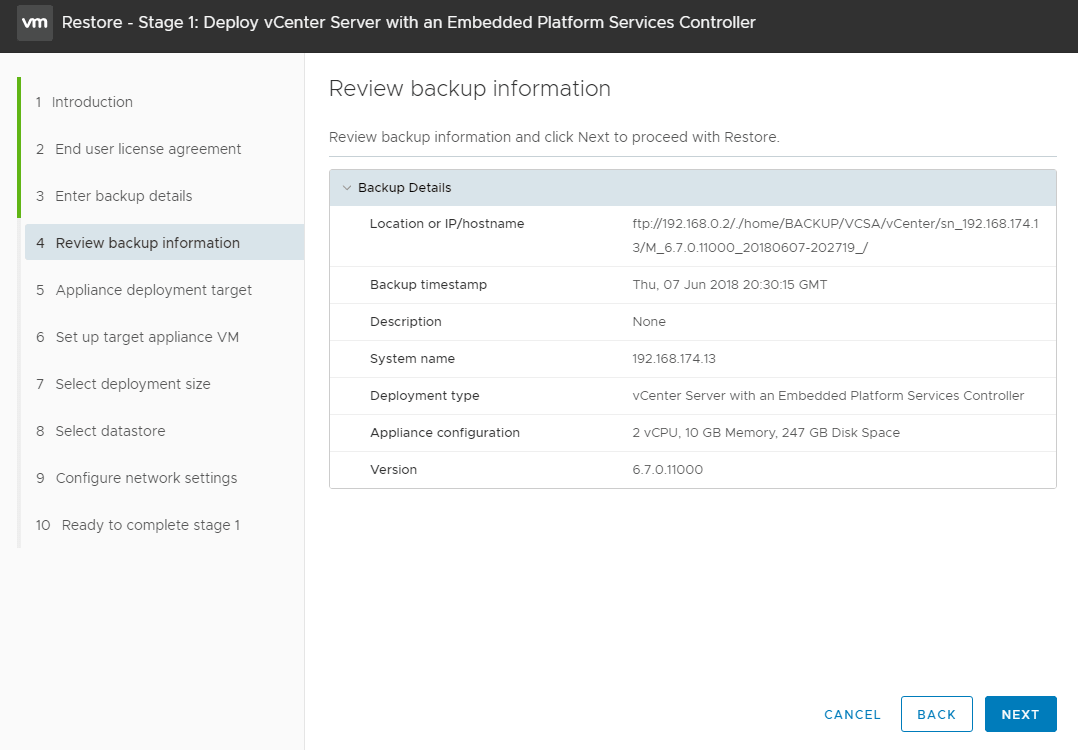
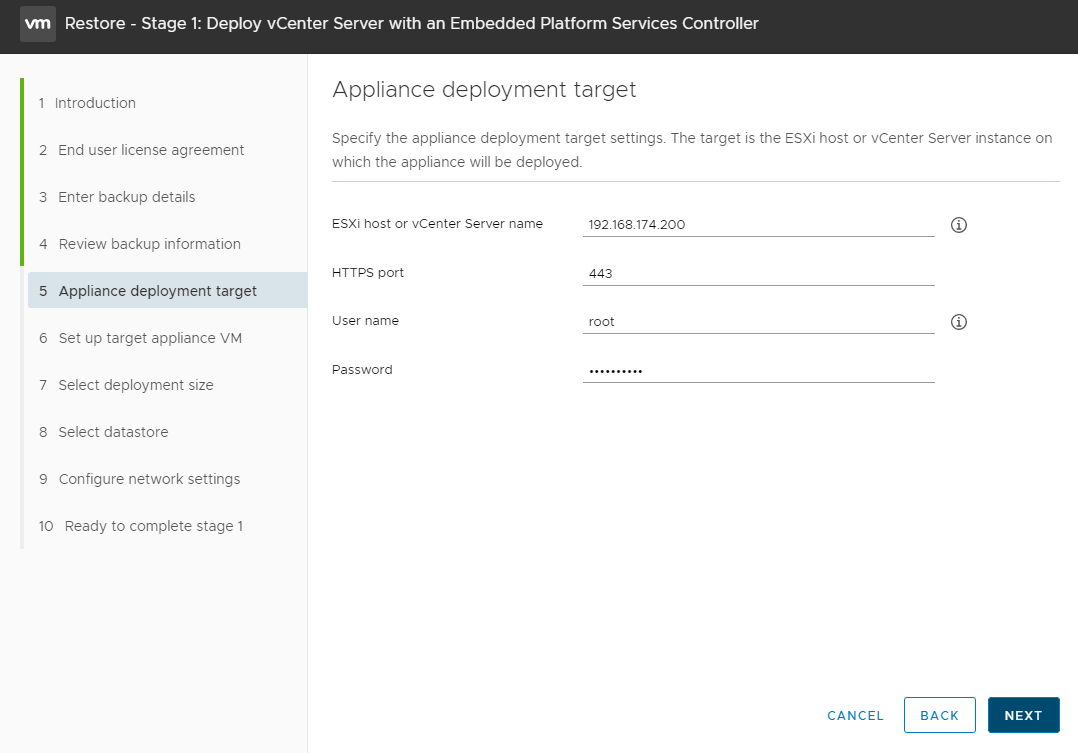
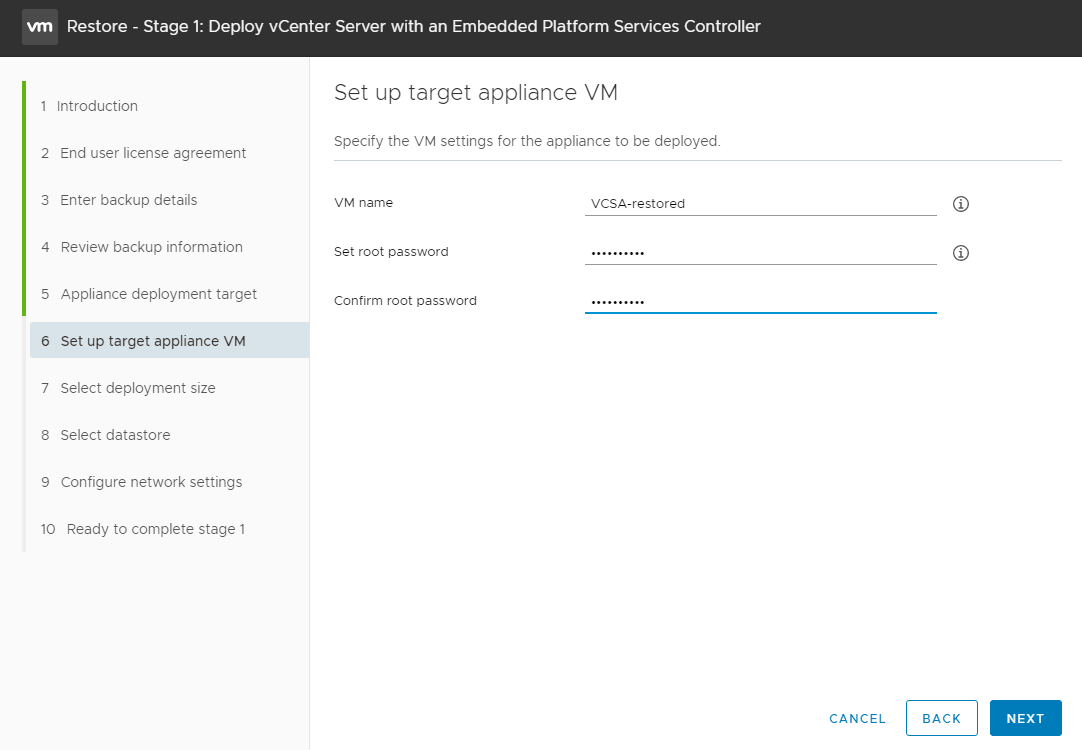
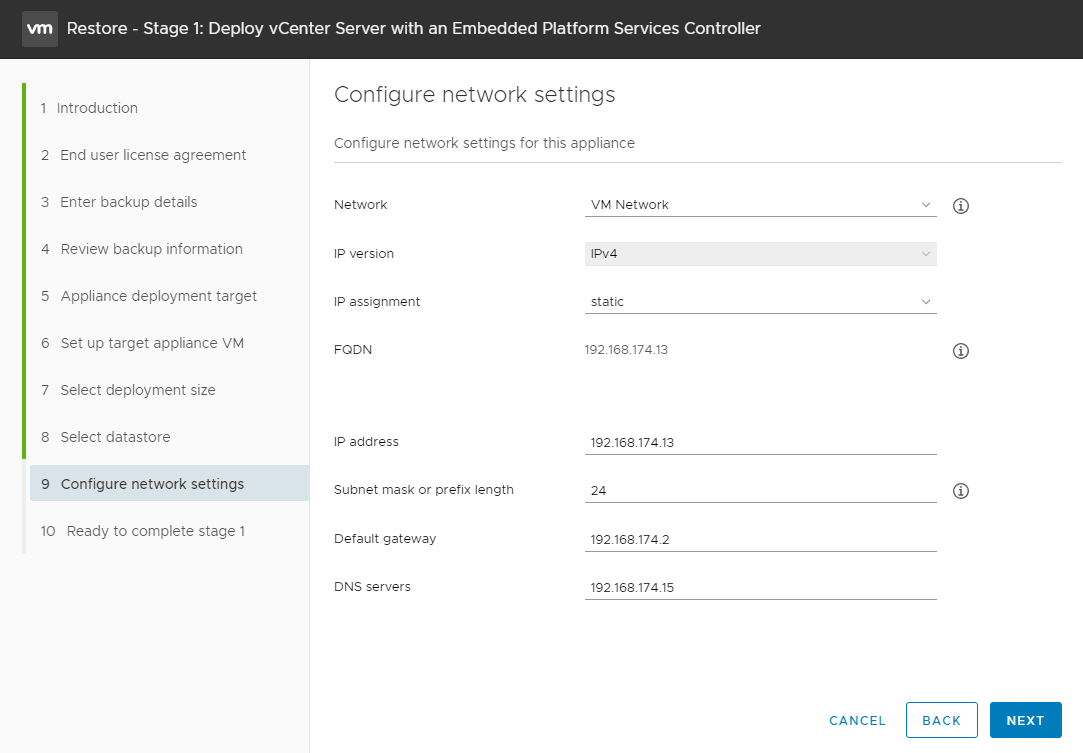
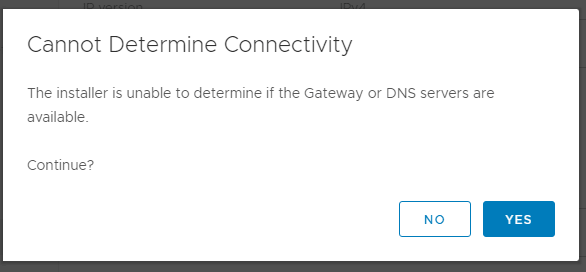
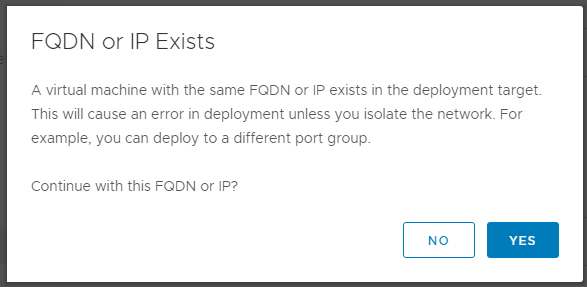

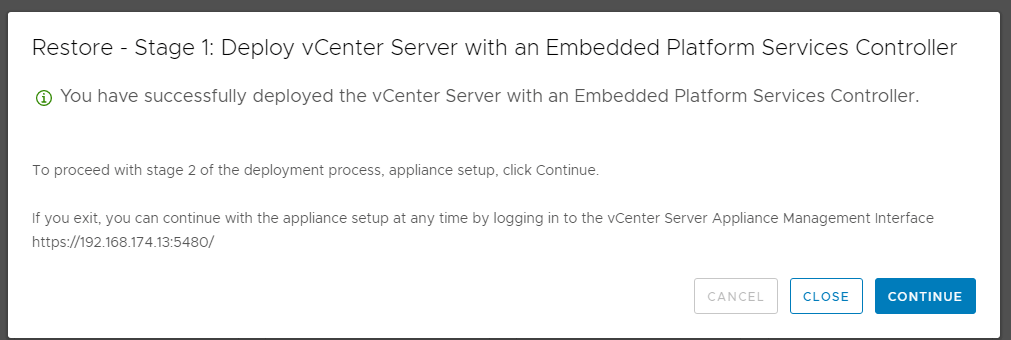
Stage 2: Restore from backup
The second stage will be much faster than the first one and you won’t have a lot to do.
- Click Next on the Introduction page
- The backup details are already populated from stage 1. If you used an Encryption password in your backups, type it now
- If the “old” appliance is still running, you need to shut it down now otherwise you will run into network conflicts. If the appliance was healthy anyway you can even already delete it from disk. Then click Finish. Note that you will get a warning stating that you can’t pause or stop the restore process so be mindful of that if you start the process at 5PM on a Friday..
- After you start the process you just need to wait for it to complete successfully
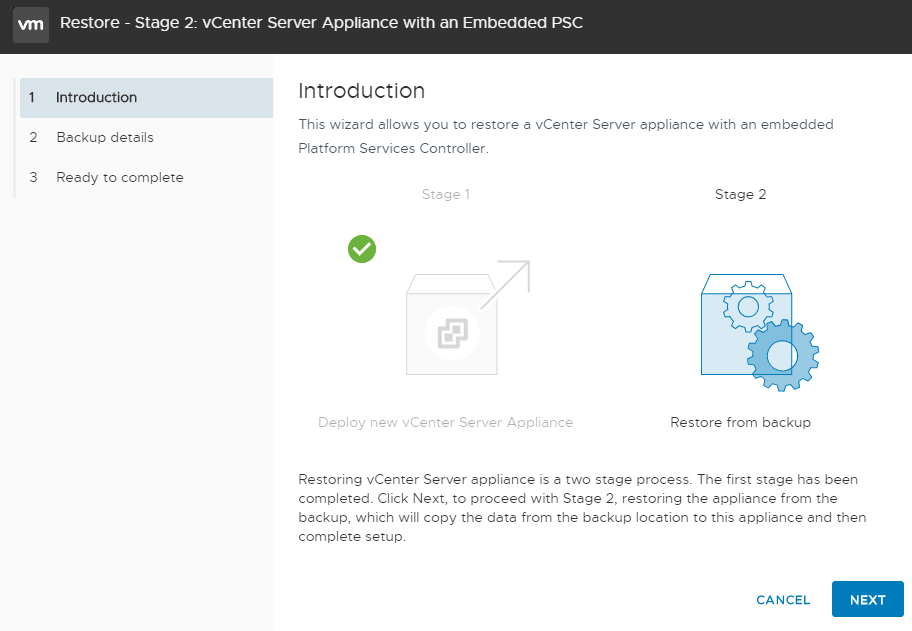
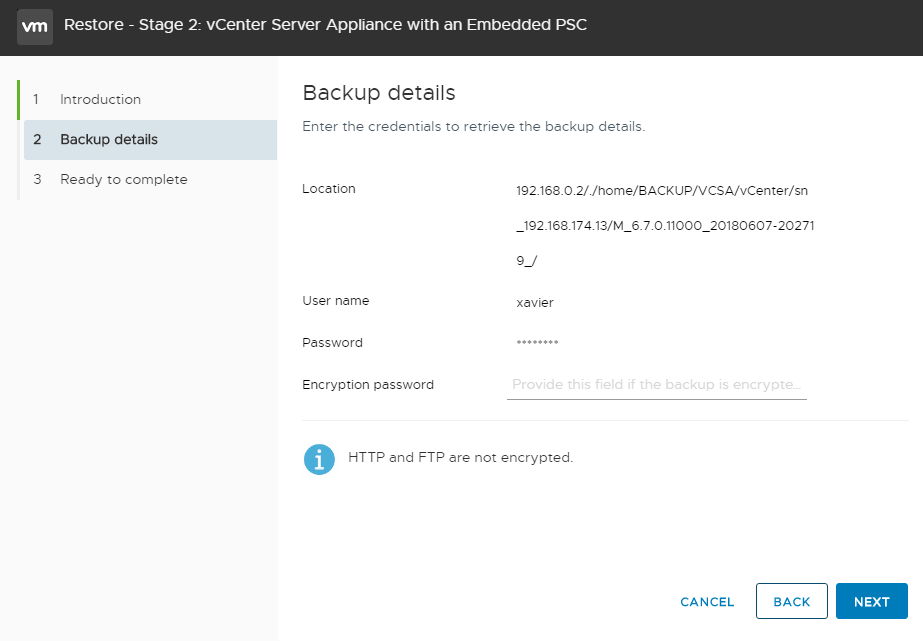
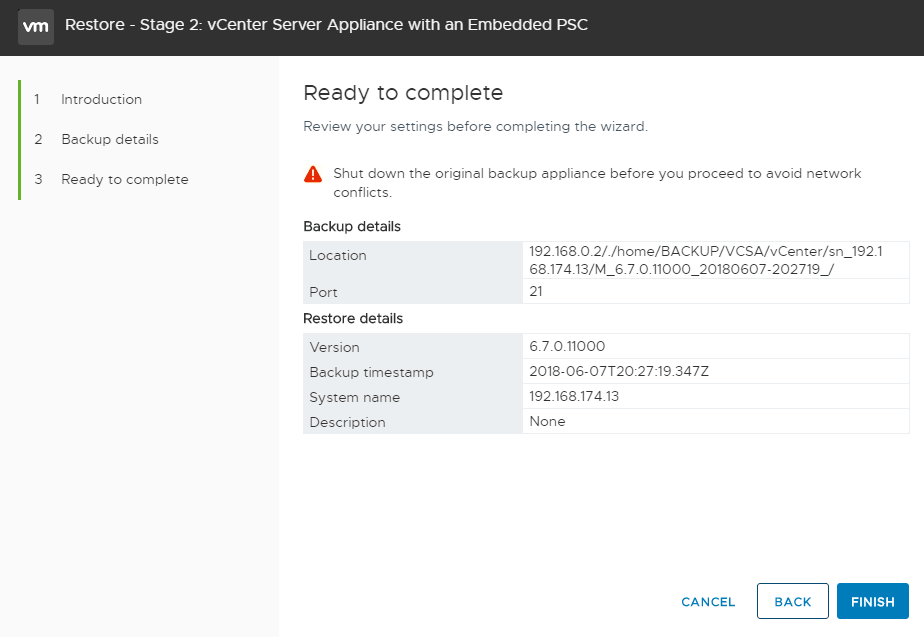
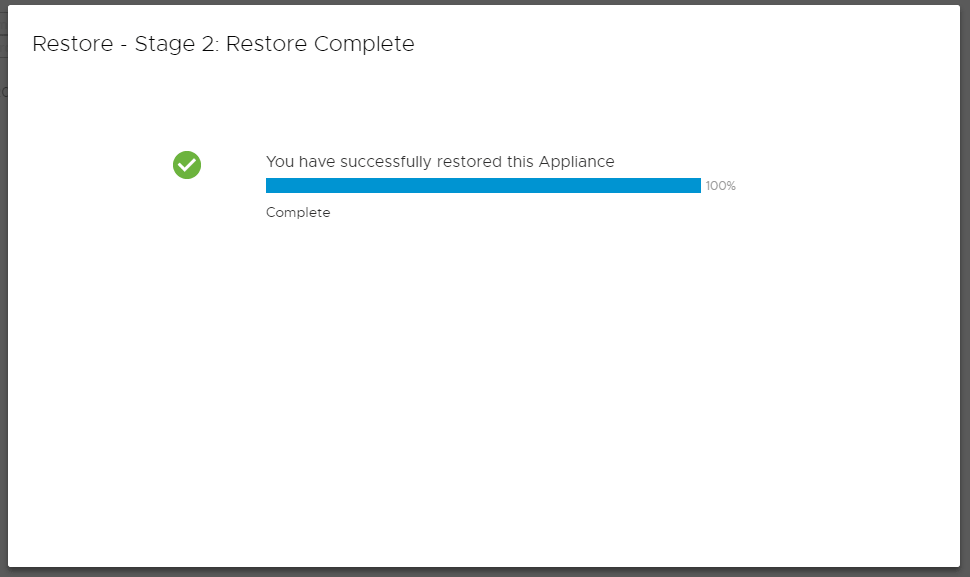
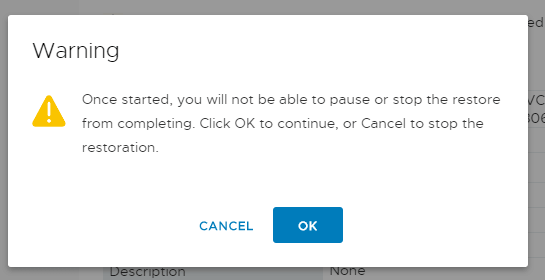
Post restore
You can now access the vCenter with a freshly restored backup and you are back to a “production ready” state.
Refer to the Considerations chapter in this article for more details.
- Check your distributed vSwitches and restore the config if you backed it up before re-deploying the appliance
- Clean the content library
- Make sure all the hosts are connected (if you added some after the backup)
- Check your Storage Policies and DRS configuration
Conclusion
Just like in vCenter 6.5 the restore process is very easy and works quite well. However what needs to be watched is for what was changed in vCenter between the backup and the restore. It is not always easy to track the changes but it is best to take the time to look into it before starting the restore to avoid forgetting things if the appliance is healthy enough.
Check out our VMware Beginners series here: VMware for Beginners – What is vSphere Distributed Switch: Part 15(a)
Follow our Twitter and Facebook feeds for new releases, updates, insightful posts and more.

